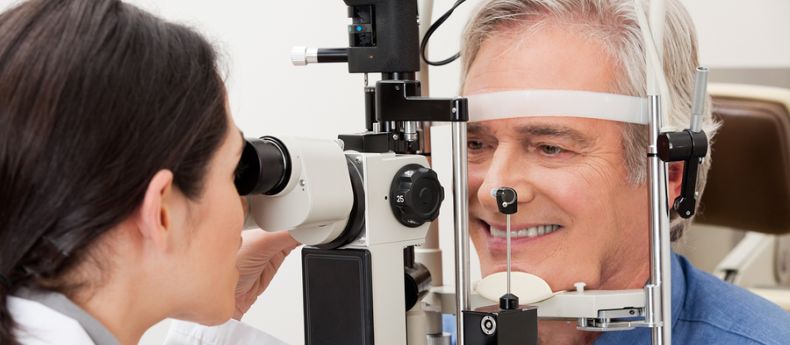
Don’t Let Glaucoma and Cataracts Rob You Blind
Cataracts and glaucoma are two conditions people generally associate with old age, and rightly so. Hence, a growing number of cataract and glaucoma cases would naturally accompany China’s growing aging population. What’s surprising is that many healthy, middle-aged patients are suffering from cataracts and glaucoma as well. The problem is mostly related to awareness.
Because most patients don’t realize they have or are developing cataracts and glaucoma until it’s too late, let’s take a look at these serious eye conditions.
Cataracts: Reversible with treatment
According to the World Health Organization (WHO), cataracts are the #1 cause of blindness cases worldwide, affecting about 20 million people (WHO Annual Review, 2010). As life expectancy increases, so does the number of people suffering from cataracts.
A cataract is a clouding of the lens of the eye, causing blurred vision. People who start developing cataracts describe the early stages as similar to viewing the world through a plastic sheet. In severe cataract cases, many patients can only distinguish light from dark. Many factors affect cataracts, including age, genetics, metabolic disorders, malnutrition and trauma. The most common cases are age- and diabetes-related cataracts.
Cataracts are commonly treated with surgery (no effective drug treatment is currently available). Cataract surgery has come a long way in the past 20 years. The procedure used to take more than an hour, and thick glasses were necessary for post-operative recovery. Modern cataract surgery requires only a 2-3 mm incision to replace the lens, and multifocal intraocular lens (IOL) implants have made the recovery faster and more comfortable.
Cataract surgery can significantly improve vision, greatly enhancing the patient’s quality of life. After surgery, many patients have said they feel that they’ve gained a new life.
Glaucoma: Irreversible but controllable with treatment
Despite being the number one cause of blindness worldwide, cataracts are reversible. After surgery, most cataract surgery patients have their eyesight restored. Glaucoma is a different story; its effects are irreversible.
Glaucoma is second only to cataracts as a leading cause of blindness worldwide, resulting in about 4.5 million cases. China currently has between 650 million and 900 million glaucoma patients.
Abnormally high pressure on the optic nerve (a.k.a. intraocular pressure) is what causes glaucoma. Normally, fluids called aqueous humor flow in and out of the eye, maintaining pressure balance. However, when the eye’s drainage system is defective, these fluids build up and put more pressure on the optic nerve, which could damage the nerve and diminish eyesight. In addition to intraocular pressure, other factors can also contribute to glaucoma, including blood supply and viscosity, inflammation, and additional pressure and fluids inside the skull.
While the damage that cataracts cause can be reversed by surgery, glaucoma is irreversible. Once glaucoma damages a patient’s eye, sight cannot be fully restored. Treatment for glaucoma can only control its progression.
While the highest incidence of glaucoma is in the elderly, glaucoma can affect a person at any age. Because glaucoma can only be controlled, not cured, it requires regular checkups and lifelong monitoring. Most patients require drug therapy for the rest of their lives. However, only through accurate, regular glaucoma checkups can ophthalmologists work with patients to apply the right treatment plan. Regular checkups help to slow the disease progression and preserve the patient’s eyesight.
Most people with glaucoma don’t know they have it until it’s too late, and they miss opportunities to receive crucial clinical treatment. Doctors recommend that everyone over 40 should have their eyes checked for glaucoma annually.
Whether or not you are at risk for cataracts or glaucoma, you should still make eye health a priority, incorporating regular checkups into your life to prevent and treat these potentially debilitating conditions. If you are at risk for or have a family history of cataracts and glaucoma, you should take special care to receive regular eye examinations.
Copyright United Family Healthcare 2014 All right reserved - 京卫网审[2014]第1927号 - 京ICP备13017554号-4






